One of the most hated bits of the boat is the head. Every boat I have owned has had a unique set of steps required to make sure things “work out” for everyone involved, mainly the captain. Many guests forget half the steps, or stick things down there that should never be there. Others follow the process, but treat it like it is some sort of strength contest, and end up causing damage. No one ever says “boy I sure love the head and how much I have to do when using it”. After having completed my Power System Upgrade last year, and seeing a third year of patterns for how we use Grace, I made the decision to replace the 15 year old head with an electric one that should make the crew far happier.
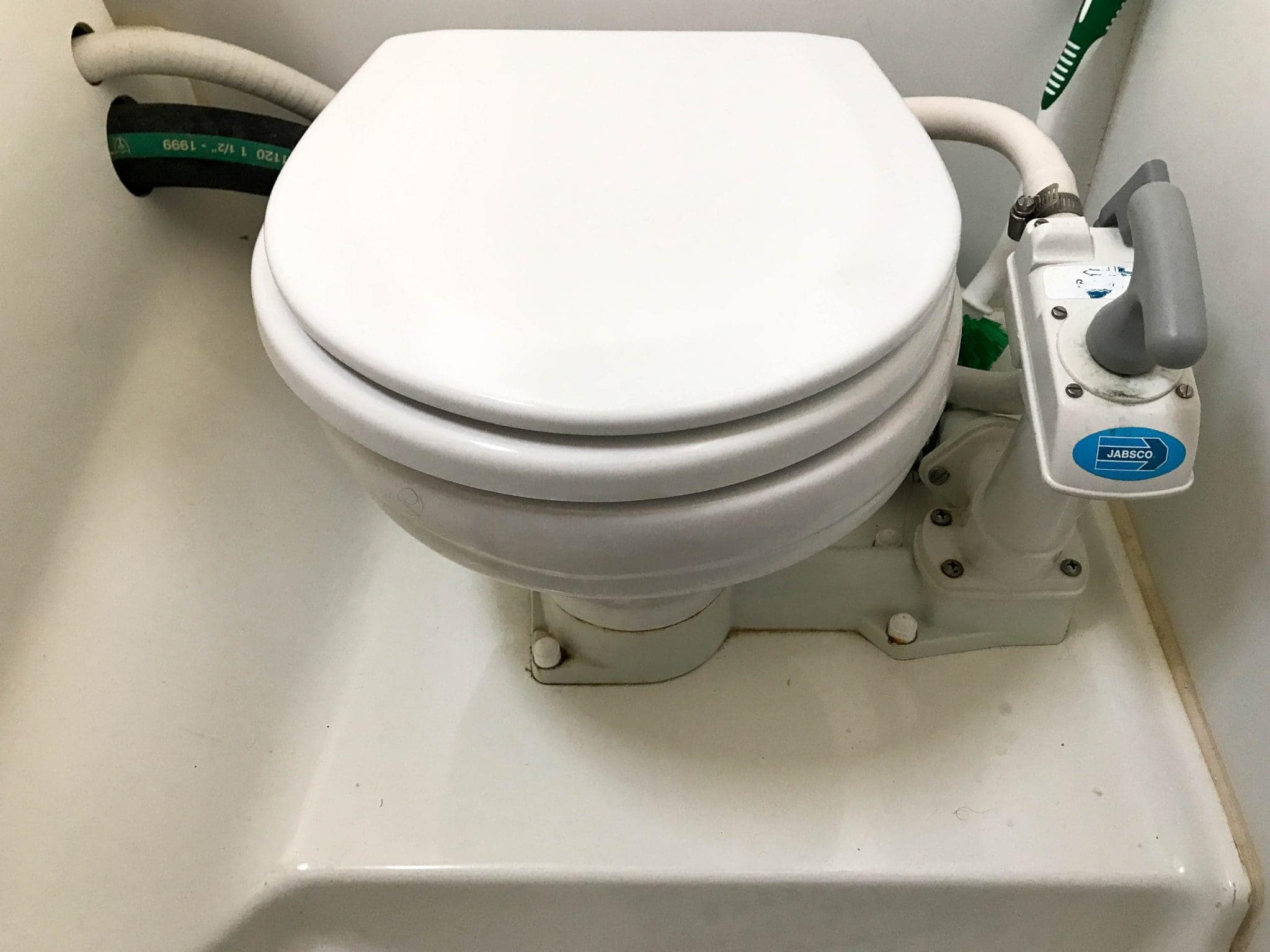
The existing head was a Jabsco, and I am not terribly fond of that particular brand after having one on a previous boat and experiencing quite a bit of issues. They’re not horribly terrible, just not that great in my opinion. This one had a broken seat setup which tended to slide at the least opportune moment, and potentially harm the sitters, ah, person. It also slammed down as the evening wore on and folks got, shall we say, more happy. It pumped OK, but it did require a decent amount of arm strength. I had “rebuilt” the various valves and rubber stuff when I bought Grace, and it worked fine, but it was having issues every so often that made me not want to trust it.
Guests other than the normal crew were a different story – they often had difficulties getting things pumped out mainly because of the crazy long pipe from the head to the tank.
The other main problem was the horrible, terrible smell. After using all of my tricks to try to mitigate it, I learned that odor was probably coming from the older discharge hose. They tend to be more permeable than the newer hoses made now, and due to previous use and build up, along with the length of the pipe, I suspected most of the smell was coming from it. It tended to smell under days of heavy use, or after leaving the boat for a few days after more frequent use.
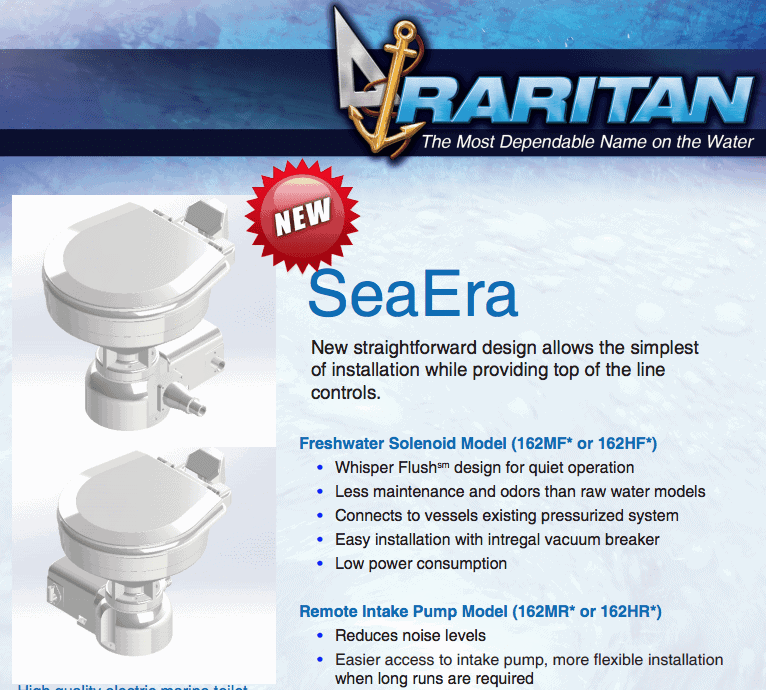
After a lot of reading and research on Cruisers Forums, SailBoatOwners.com, and many other places, I settled on the Raritan SeaEra line of heads. This has the tried-and-true macerator pump that has been used in other Raritan electric heads and appears to be very tough and easy to work on, as electric heads go. I chose the 162MR012 model from Defender.com which includes the remote intake pump, smart toilet control panel, standard marine height, compact bowl, and quiet close seat. I looked at trying to make it higher or a bigger bowl, but it would not have fit well. This model is higher by several inches than the previous Jabsco, which is a bonus, and makes it easier to sit on.
It was time to rip out the old one.
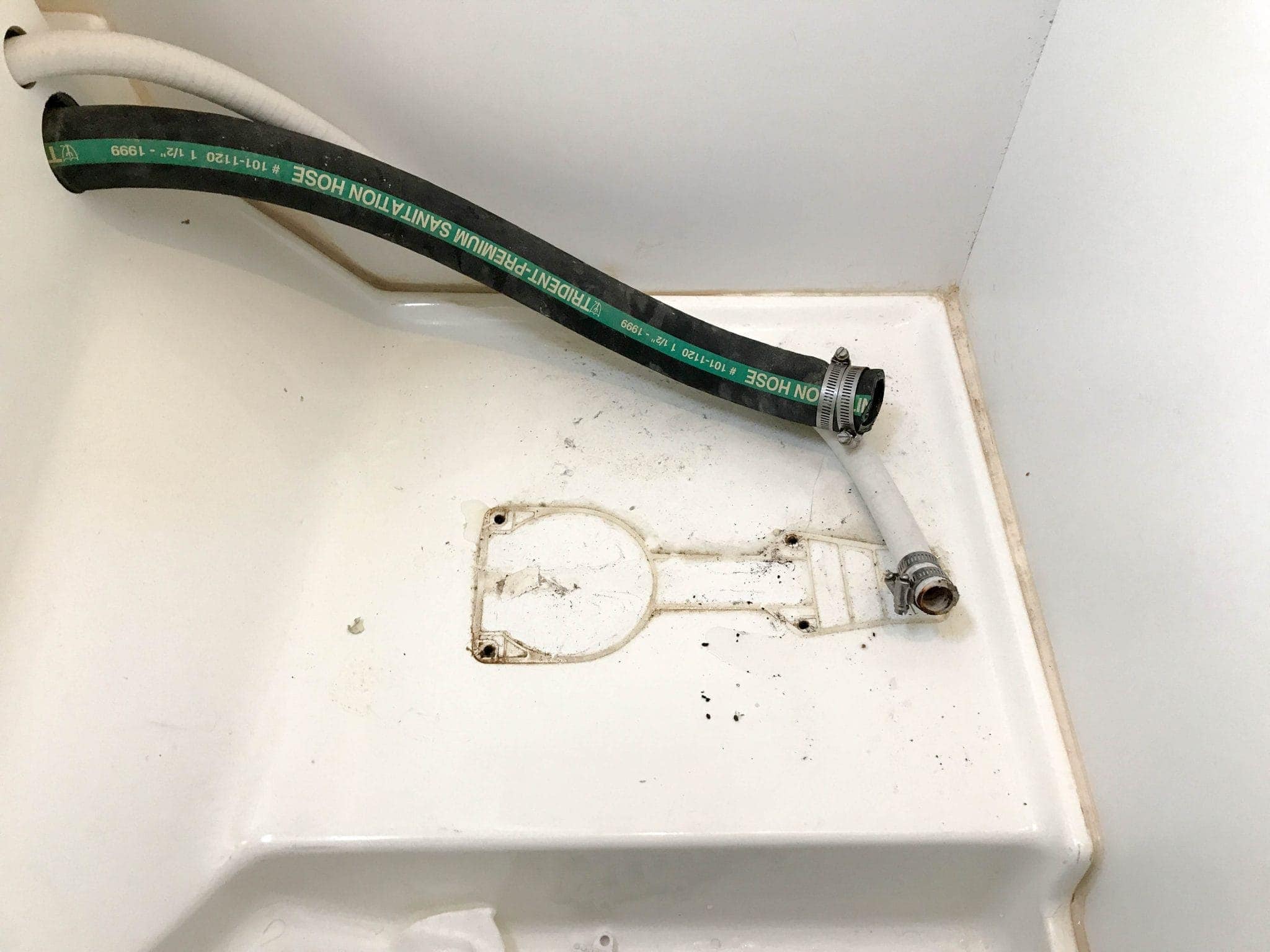
Removing the old head was easy, albeit dirty and smelly, just like the last one I did on Jammy. The result was a good platform to mount the new one to, after some cleaning. The pipes were another matter. Both of them had amazing amounts of sediment inside of them, rendering them less than half their original capacity. I didn’t take any pictures as it was something I wanted out of the boat as quickly as possible. Anyone who has ever done work on head piping knows the horrendous smell and liquids that issue from them, and this was no exception. Everything up to the holding tank and to the raw water intake was removed. The plan was to replace all of this with the newest type of piping available.
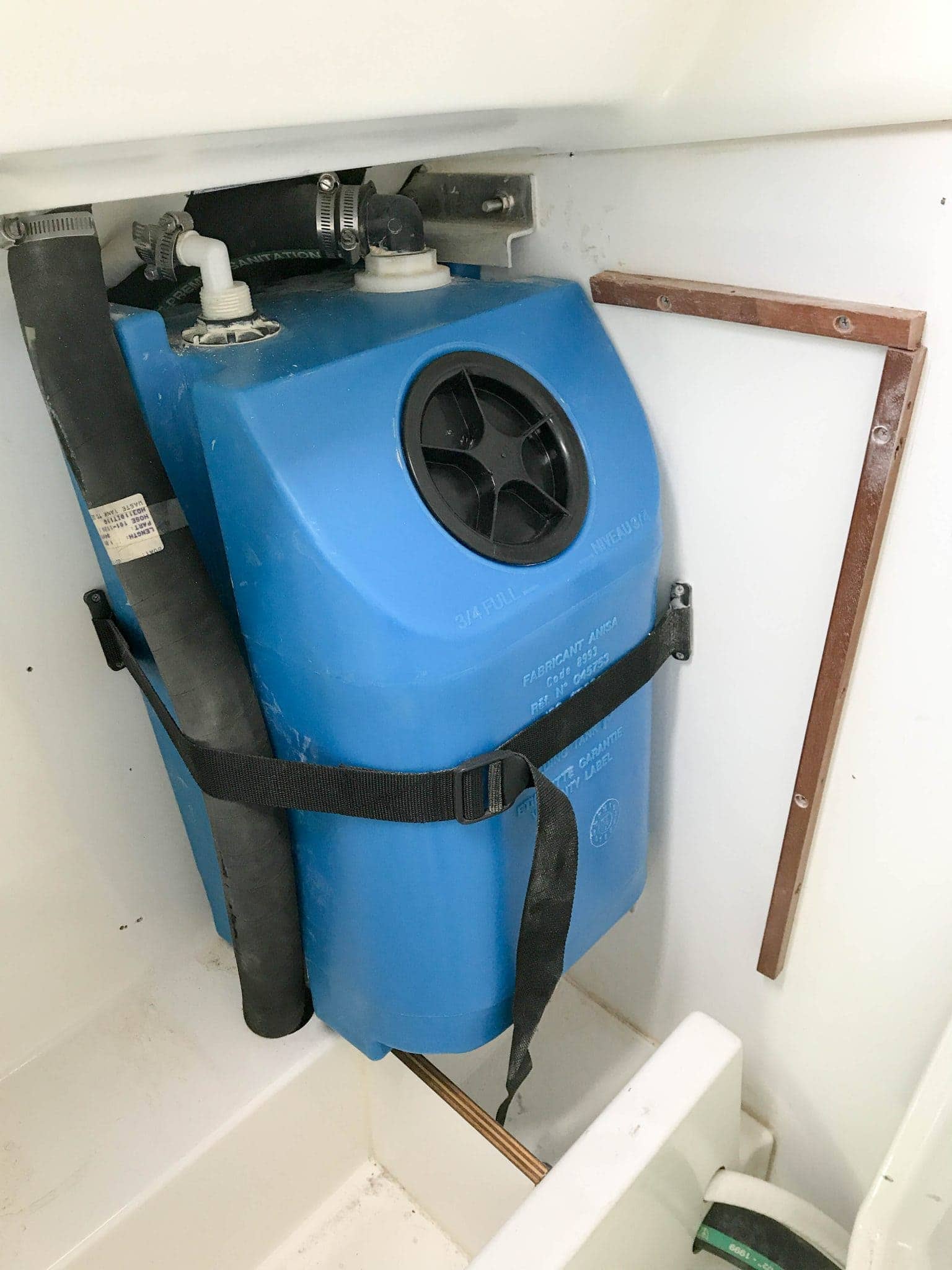
The holding tank on a Beneteau 311 is pretty small. According to the specs it is 18 gallons, and that seems to match the one I have.It is mounted to the left of the head itself, behind a big fiberglass cowling that I could easily remove. I have a TLM100 which I wrote about in Better Tank Monitoring that I have yet to put into the holding tank so I can know how full things are. After a recent trip where we twice overflowed the tank, this is a priority to install this winter. I really, really hate cleaning up from an overflowing tank. Really, really, really hate it.
This space also was the perfect spot to mount the control panel and the smart toilet control box.
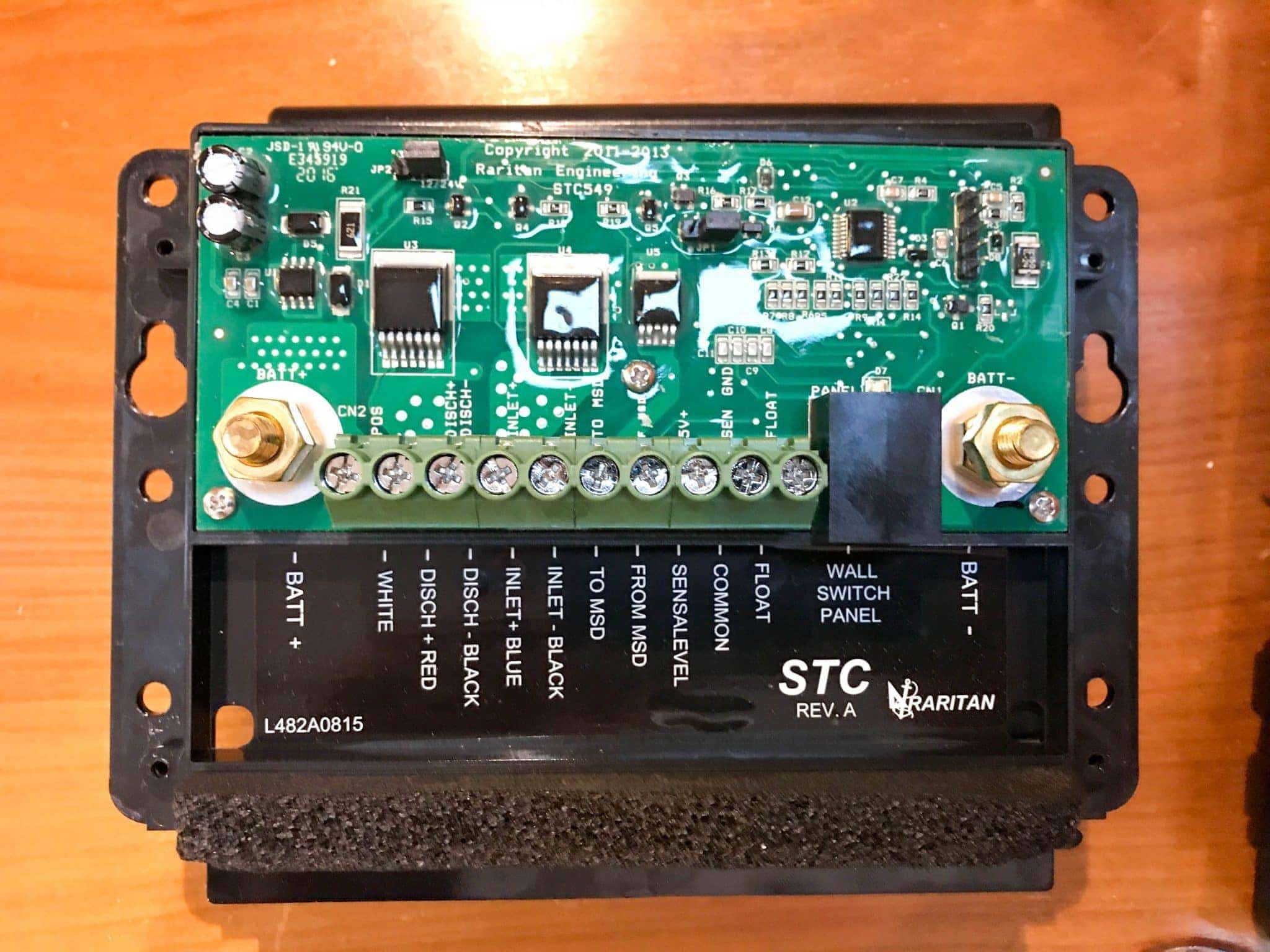
The Smart Toilet Control box is where the remote pump, control panel, and head motor are all connected. In addition, the main power leads from a dedicated 25 amp DC circuit breaker. I took the recommended size of power cable, went up one size, and ran those from a brand new 25 amp circuit to the box, mounted inside the cowling area.
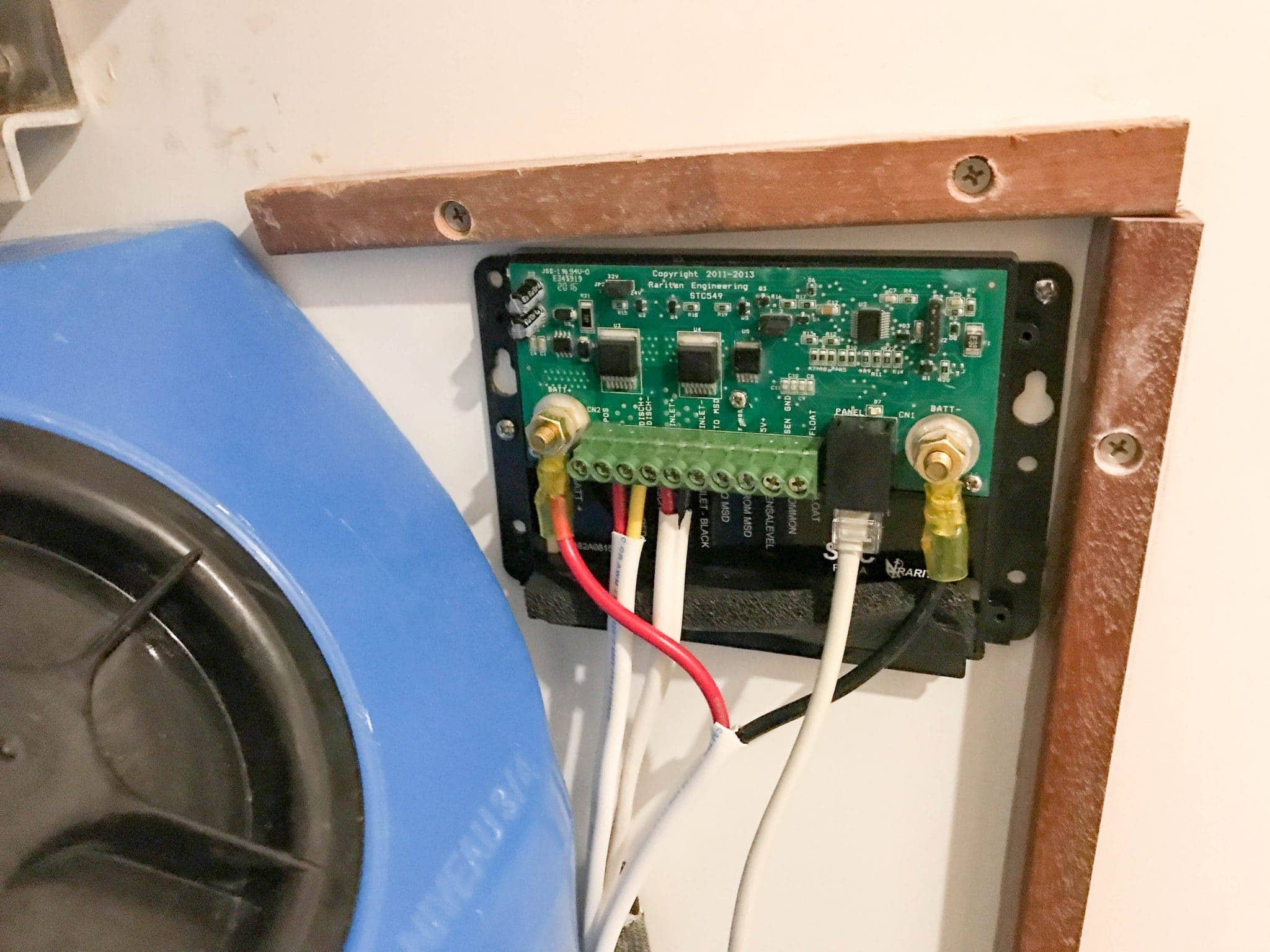
The box fit perfectly in the little spot under the fiberglass cowling (note that the above was a test fit and not completed wiring – this was to validate locations) and will remain dry and safe.
I used the existing seawater through hull and connected the included pump inline. I also bought a recommended filter and put that inline as well before the pump to protect it from sea life and junk being sucked up. I considered using fresh water or having a hybrid system, but after investigating the complex setups you should have to protect your fresh water supply, as well as additional piping, I decided to continue using raw seawater. I also have a smaller 50 gallon fresh water tank, and didn’t want to end up burning through that faster than normal on longer journeys.
The control panel uses RJ45 cabling with what look like standard ends, although I’m not sure you could replace it with an off-the shelf CAT5/CAT6 cable – I didn’t look at the pinouts. The remote pump and head/macerator pump connect up to the terminal blocks which are clearly labeled. There are also sensor points and connections to an MSD and tank level sensor which I do not have.
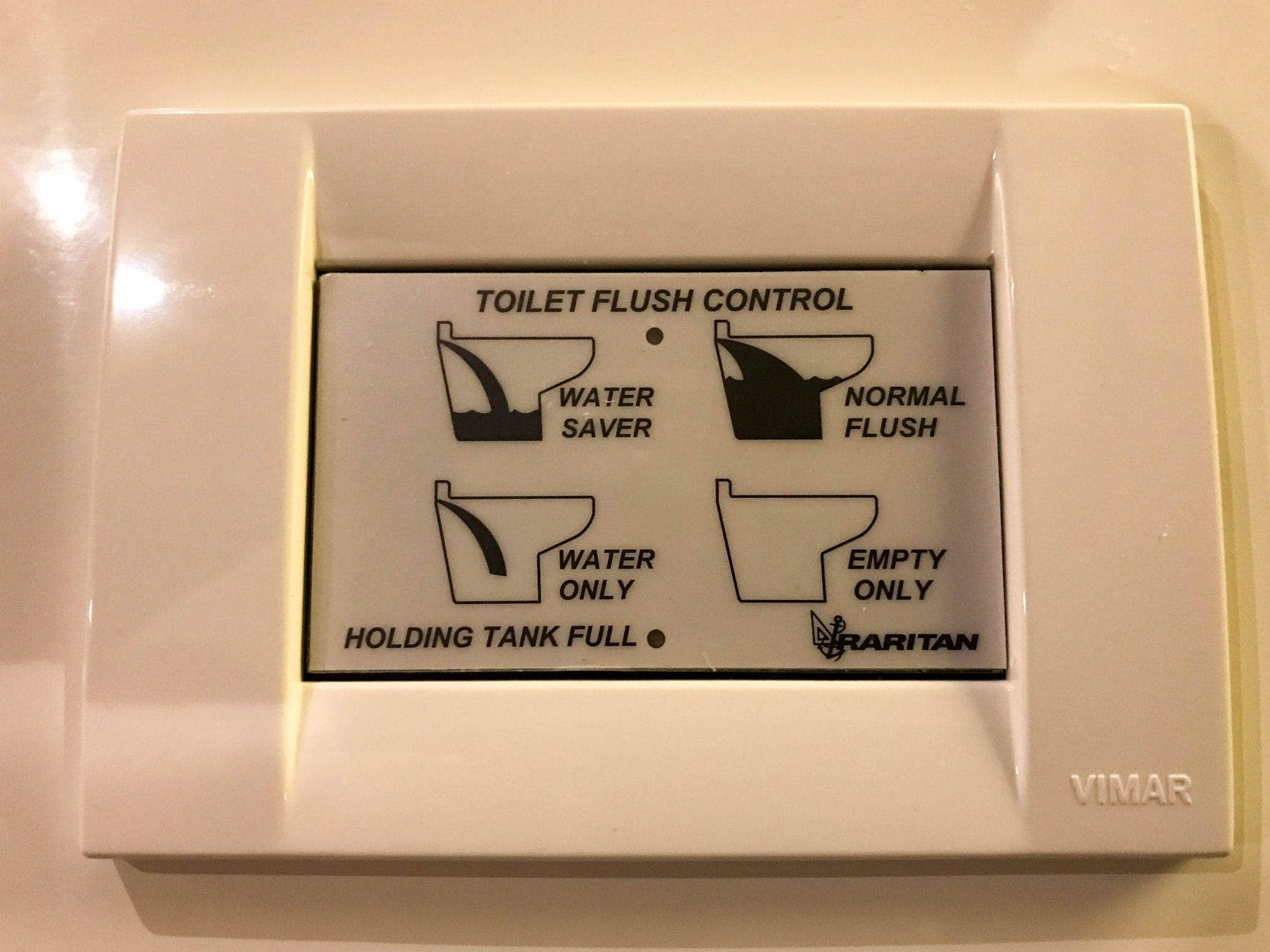
The control panel was very easy to mount, although I did have to cut a hole in the fiberglass cowling. A couple of screws later, the faceplate snapped on, and it looked like it came with the boat! I love the control they give you on the panel in terms of pre-set flush cycles, plus manual overrides.
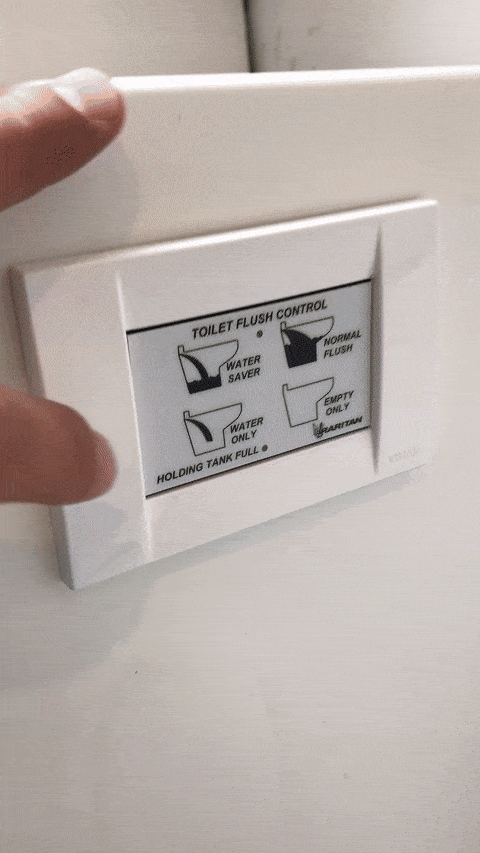
The smart toilet control was very interesting to me because you can program the length of each action – water coming in, waste going out, time in between, and differences between the Water Saver and Full Flush cycles. Above I am using the Water Saver flush which is much shorter of a cycle, and I have since adjusted it to be a bit more to our liking based on use. Having the two cycles helps save water and tank space depending on how much waste there is to get rid of.
The flushes are quick and efficient, and I have had no problems once things were adjusted in having a clean bowl after any type of use. In fact, compared to the old manual system, the noise seems to be far less since someone isn’t man-handling the pump for n-number of strokes. This is especially nice since the head compartment is catty corner to the master berth – I have not been woken up in the night by someone pumping away on the old system. The quiet close seat is also a great upgrade – you could do this on any head for that matter – and makes it quiet when folks get a bit happier as the evening wears on.
I have not noticed a huge amount of power usage even when off shore and engine power for a couple of days. Sure, it uses more than the manual head before, but so far it has not become a power suck, as I suspected based on my calculations before purchase. I’m sure if I were going on longer cruises without having the engine or shore power available, that would be a different situation.
Friend Steve Roberts had a similar project, although the scope was far greater than simply replacing a single toilet and piping – he covered it in his article the Boat Bidet. We were both trying to upgrade around the same time and exchanged a lot of useful research.
Even with all of the other projects we did in the last couple of years on Grace, this one has been voted unanimously by regular crew and guests as their favorite upgrade. I’m OK with that since it makes their time, and mine, on the boat more enjoyable.

